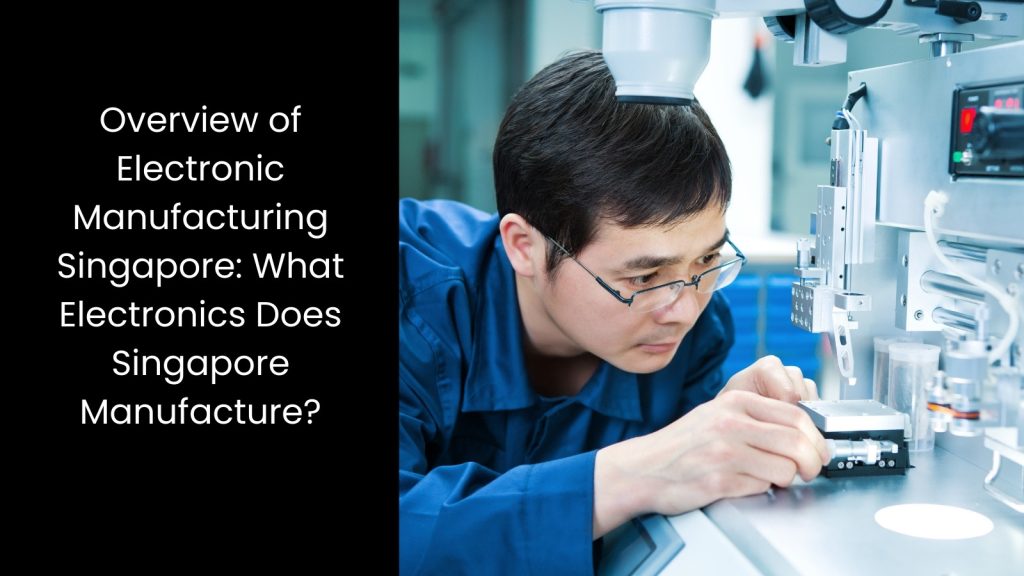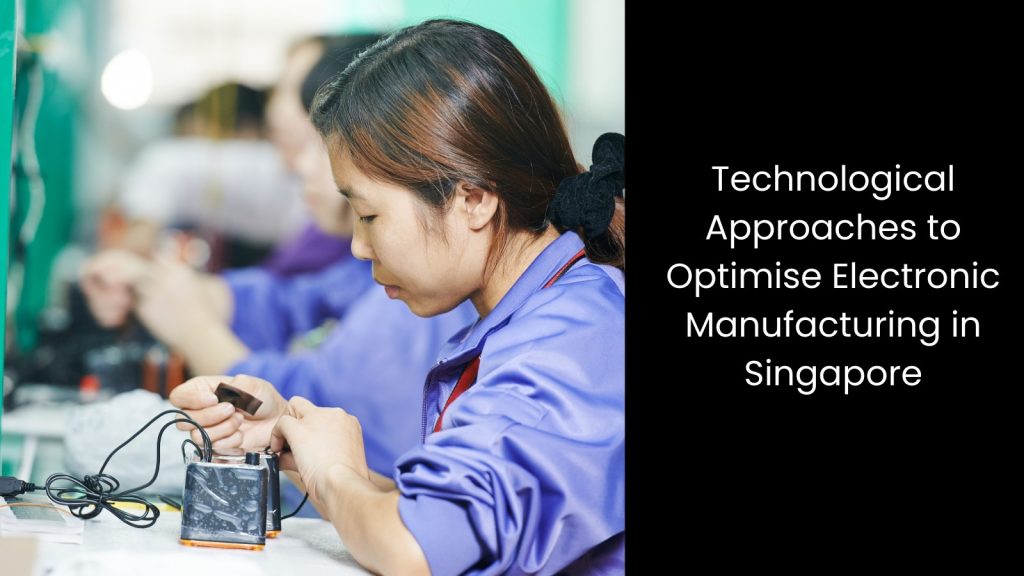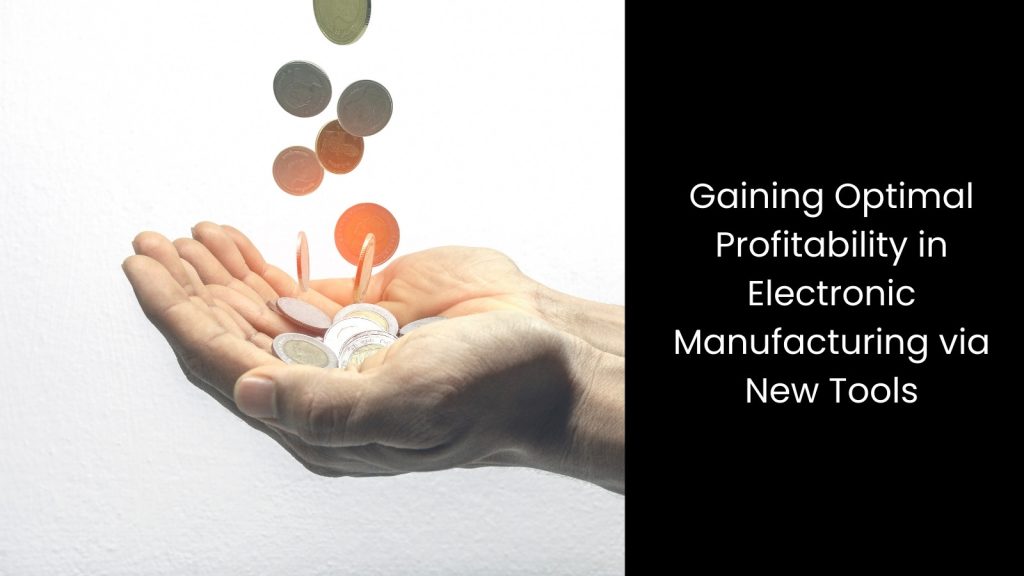In this article, we dive deep into the technological approaches you, as an electronic manufacturer in Singapore, can utilise to optimise your production.
We will understand
- Overview of Electronic Manufacturing Singapore: What Electronics Does Singapore Manufacture?
- Technological Approaches to Optimise Electronic Manufacturing in Singapore
- Cerexio Production Yield Optimiser System for Maximum Electronic Manufacturing Yield
- Gaining Optimal Profitability in Electronic Manufacturing via New Tools
Overview of Electronic Manufacturing Singapore: What Electronics Does Singapore Manufacture?

- Singapore comes into the spotlight when it comes to the global electronics manufacturing sector, producing a wide range of high-tech products that drive various industries.
- The electronics companies in Singapore focus on manufacturing semiconductors, integrated circuits (ICs), printed circuit boards (PCBs), data storage devices, and consumer electronics. Semiconductors, being essential components of modern technology, form a significant part of the country’s electronics manufacturing landscape.
- Also, major global electronics manufacturers like Micron, Broadcom, and Infineon have established operations in Singapore, contributing to the country’s status as a global hub for semiconductor production. Semiconductors account for about 70% of Singapore’s electronics output, which demonstrates the industry’s heavy reliance on these components.
- It is evident that Singapore is a leading manufacturer of hard disc drives and other data storage solutions, serving the needs of industries such as cloud computing and data centres. Consumer electronics, including smartphones, wearables, and home appliances, are also key products manufactured by electronics companies in Singapore.
- Nowadays, it is clear that Singapore’s electronics sector benefits from advanced manufacturing technologies, including automation, robotics, and artificial intelligence, which enable higher efficiency and precision in production. This focus on innovation keeps Singapore competitive in the global market.
Technological Approaches to Optimise Electronic Manufacturing in Singapore

Advanced Materials and Nanotechnology
You may be aware that electronic companies in Singapore constantly look for ways to improve product performance while reducing size and energy consumption. This is where nanotechnology allows manufacturers to manipulate materials at the atomic and molecular levels, which leads to the creation of smaller, faster, and more efficient transistors, resistors, and other essential components.
Additionally, the development of new materials like flexible and stretchable electronics opens doors for wearable technology and advanced consumer devices that are more durable and adaptable to different environments. These materials make it easier to produce components that can bend or twist without breaking, allowing for innovations in product design.
What is more, nanotechnology applications enable the creation of electronic components with higher thermal and electrical conductivity. Not to mention that this reduces heat generation and improves the lifespan of devices. Nanotechnology also helps an electronic company to shrink the size of components without compromising performance, which is critical in today’s demand for smaller and lighter electronic devices like smartphones and wearable tech.
Lean Manufacturing and Six Sigma
So, just by streamlining processes and minimising these inefficiencies, companies in Singapore’s electronic industry can significantly improve their production speed and reduce operational costs. This allows them to meet tight deadlines while maintaining cost competitiveness.
At the same time, Six Sigma emphasises reducing variability in manufacturing processes to improve product quality and consistency. Through its capacity to use data-driven techniques and statistical analysis, Six Sigma helps your electronic company identify the root causes of defects or errors and implement long-term solutions. This results in fewer defective products, less rework, and improved customer satisfaction.
Combining Lean and Six Sigma provides a powerful framework for electronic manufacturing companies to increase their overall operational efficiency while maintaining high-quality standards.
Digital Twin Technology
When they use Digital Twin technology, companies can visualise their entire production line in real-time, gaining deep insights into how each process works. This enables them to identify bottlenecks, inefficiencies, or equipment that may require maintenance and ultimately allows for proactive problem-solving before any disruptions happen.
It also enhances workflow optimisation by simulating different production scenarios. Companies can test how changes in process design, material flow, or equipment settings will affect production speed, quality, and costs. This kind of experimentation in a virtual environment prevents mistakes on the actual production floor, making it a safer and more cost-effective way to improve operations.
Another key benefit is the ability to maintain product quality.
As it is doable to monitor the digital replica of a manufacturing process, an electronics manufacturer can ensure that quality standards are consistently met without having to halt production for inspections or testing. This leads to faster production times and fewer defective products.
Further, Digital Twin technology integrates with data analytics and artificial intelligence. This will allow electrical components manufacturing companies to continuously learn and improve from the data collected during production. This results in more accurate forecasts and smarter decision-making.
Automation and Robotics
This occurs when they integrate automated systems; electronics companies in Singapore can handle repetitive tasks more efficiently. This ensures consistency in every step of the production process. For example, robots can assemble small, intricate components with higher precision than human workers, reducing the chances of errors and improving product quality. This results in fewer defects and less rework, which ultimately saves time and resources.
In another way, automation allows companies to operate at a much faster pace, enabling them to meet higher demand without compromising quality.
Robotics also plays a crucial role in packaging, where machines can package products faster and with greater uniformity than manual labour. If it is possible to adopt automation and robotics, an electronics company can also reduce its reliance on a large workforce, which lowers operational costs, especially in regions with high labour expenses. As technology advances, more sophisticated robotics are becoming available, enabling electronics companies in Singapore to automate increasingly complex tasks, ensuring they remain competitive in the global market while delivering high-quality products efficiently and at a lower cost.
Cerexio Production Yield Optimiser System for Maximum Electronic Manufacturing Yield

Cerexio Production Yield Optimiser System is a cutting-edge solution designed to maximise the output of any manufacturing domain. When it comes to electronic manufacturing, you can employ this cutting-edge solution of Cerexio to ensure that you receive the maximum essence of the raw commodities that you put in. As our solution is powered by Industry 4.0 capabilities like advanced analytics, AI, and real-time data monitoring, it enables electronic manufacturers to identify inefficiencies, reduce defects, and optimise production processes in no time under one roof.
Gaining Optimal Profitability in Electronic Manufacturing via New Tools

You simply cannot reach optimal profitability overnight, as it requires a commitment to innovation. Tools like automation, real-time data monitoring, and advanced yield optimisation software clear the path for you to walk smoothly. It not only gives the true value to each dollar but also dramatically improves productivity.
